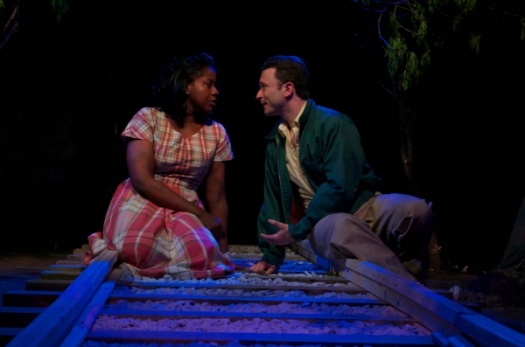
The legend of “The Maco Lights” dates back to 1867. It’s reported that the rear car of a train travelling through Maco, North Carolina became detached. Shortly after the detachment, another train rapidly approached. The only passenger
@font-face { font-family: “Times New Roman”; }@font-face { font-family: “Verdana”; }p.MsoNormal, li.MsoNormal, div.MsoNormal { margin: 0in 0in 0.0001pt; font-size: 12pt; font-family: “Times New Roman”; color: black; }table.MsoNormalTable { font-size: 10pt; font-family: “Times New Roman”; }div.Section1 { page: Section1; }
The legend of “The Maco Lights” dates back to 1867. It’s reported that the rear car of a train travelling through Maco, North Carolina became detached. Shortly after the detachment, another train rapidly approached. The only passenger aboard the standing car was a train flagman. The flagman appeared on the back landing of the car holding a lantern as the moving train drew near. The inevitable collision resulted in the death of the flagman. People have accounted throughout the decades (including U.S. President Grover Cleveland) of the flagman’s reappearance on the train tracks in the form of a glowing light. Playwright Bekah Brunstetter speculates a different version of the story in her latest production – Take Her to See the Maco Lights. The twist of Brunstetter’s story makes for an interesting plot when the flagman’s car is replaced by three “colored” train cars.
The time is present day, in the Triad of North Carolina. A young, white male sits on a tree base across from a set of train tracks. He begins telling the audience the story of the last three “colored” cars. A train collision occurs and all colored passengers are killed instantly. Mutilated body parts are scattered throughout the area. Rachel, a young African-American woman, enters moments later. She is consumed in a state of marijuana euphoria and elated to find “someone” there to keep her company. Rachel is from New York. She’s in town to attend her grandmother’s funeral. Wearing a beautiful black and white multi-patterned dress of her deceased grandmother, Rachel engages in friendly conversation.
The story suddenly shifts to 1957. Rachel is transformed into Mattie, and the young man transforms into James. The setting remains in the Triad of North Carolina on the same set of train tracks. Another, yet not completely separate story emerges. It is the love story of Mattie and James. However, this isn’t a romanticized tale of a forbidden interracial love or lust. Brunstetter has created a multi-dimensional text and set of characters. Mattie is an independent woman not afraid to speak her mind, yet aware of her social limitations. James is young and na∩ve, but understands his greatest challenge is whether to give up ‘white’ privilege for the sake of ‘Black’ love.
But Mattie and James don’t just meet at the far off train tracks where it is safe to reveal their love. They also want to see the “Maco Lights”. Their quest becomes important when Mattie reveals her connection to one of the passengers on one of the colored train cars. This journey further turns into a haunting reconciliation of past, present, and future events.
Playwright Bekah Brunstetter succeeds in developing the material and connecting each storyline. The actors, LaNisa Frederick and John Wehrman, also give spectacular performances which makes this theatrical experience well worth attending. Take Her to See the Maco Lights runs through June 2.
Copyright 2012 Chicago Defender
